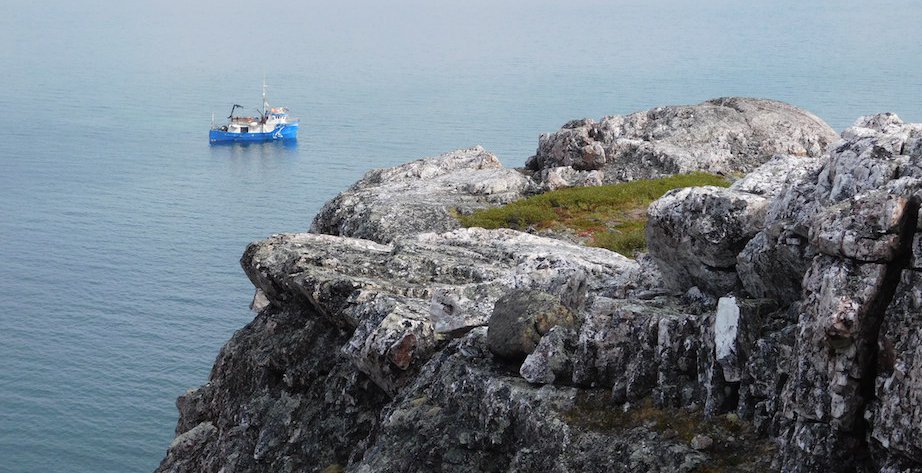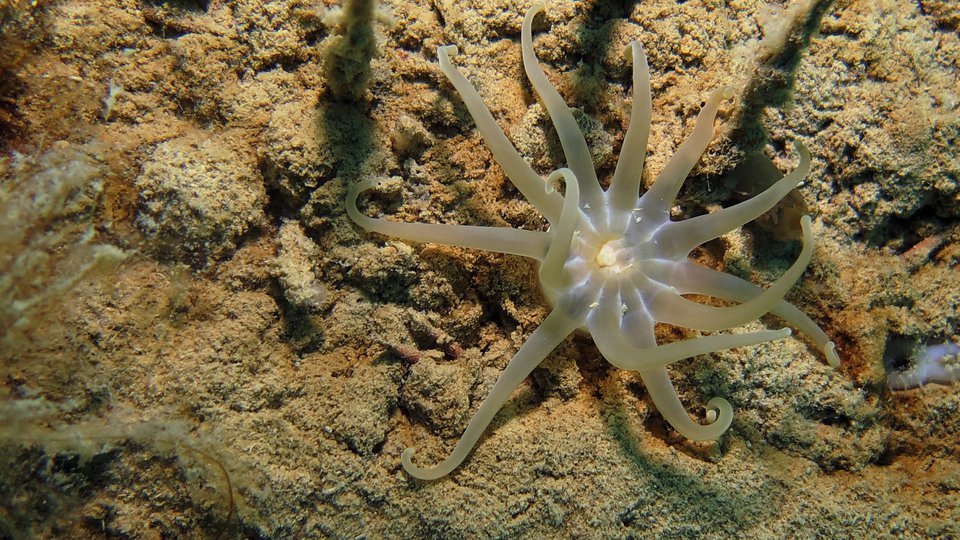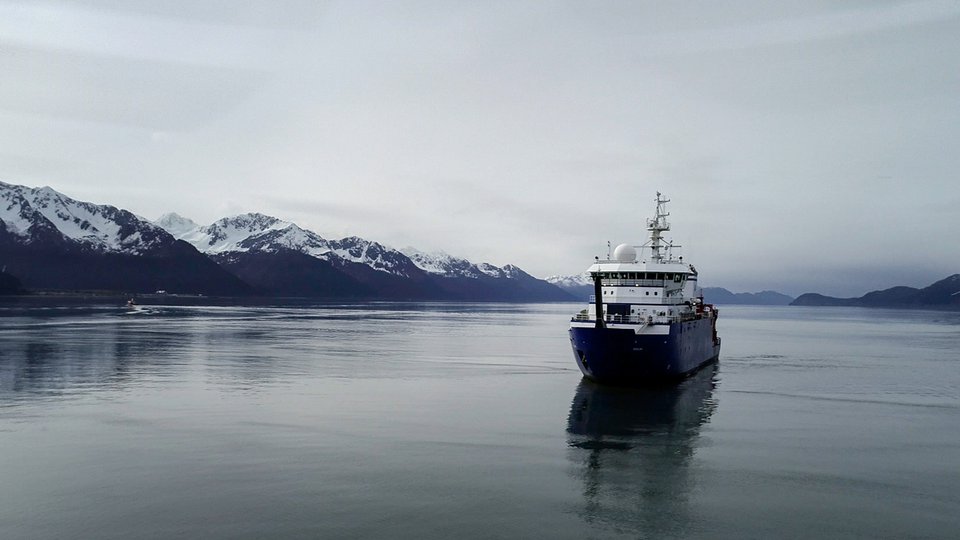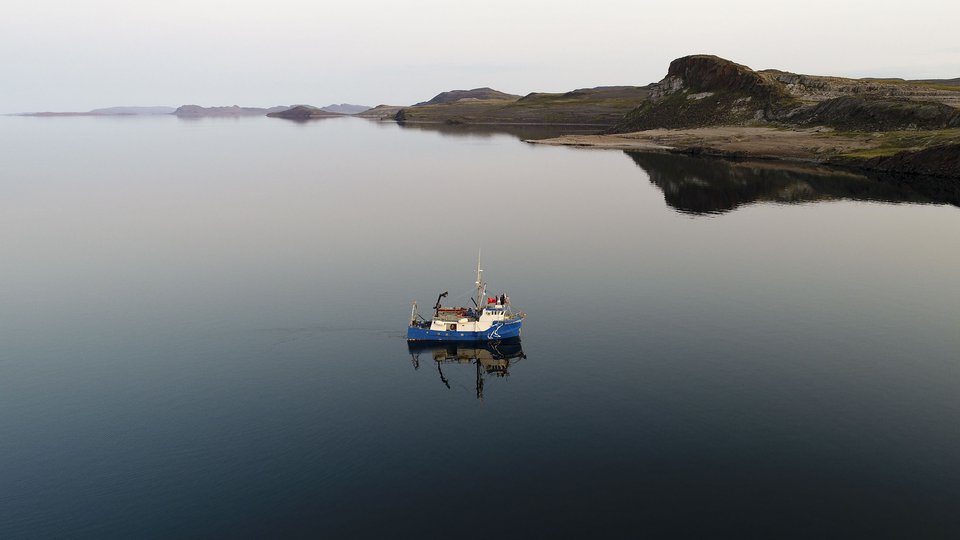
Why image the seafloor in this remote place? Well, remote it is, but the human foot print is increasing regardless, and we do not even know what lives here now. The village of Cambridge Bay now hosts the Canadian High Arctic Research Station, mining goes on in the northern Nunavut area nearby, ship traffic through the Northwest Passage is increasing. Yet, we still do not have a grasp of the natural resources in the marine part of this geologically reasonably well-mapped area. A dive team from the Vancouver Aquarium is working on cataloguing the seafloor fauna within a diver’s reach, and reveals plentiful life along the rocky shores of south coast of Victoria Island. We are here to add in the deeper seafloor biota beyond the diver’s reach.
Many of us like to walk around in the intertidal coastal zone to watch birds and otters feeding, harvest clams, or walk their dog. Once the water gets deeper, the animals at the ocean floor are out of sight and typically only accessible to SCUBA divers. In even deeper waters, scientists use a variety of tools to find out what leaves at the seafloor, most of which involve towed nets that get dragged over the seafloor. Imaging techniques, however, have the advantage of being essentially non-invasive, and they tell us much more about both the environmental setting and the small scale distribution of animals – and plants in shallow water – than a trawl haul that compresses the catch into the body of the net.
Why image the seafloor in this remote place? Well, remote it is, but the human foot print is increasing regardless, and we do not even know what lives here now. The village of Cambridge Bay now hosts the Canadian High Arctic Research Station, mining goes on in the northern Nunavut area nearbye, ship traffic through the Northwest Passage is increasing. Yet, we still do not have a grasp of the natural resources in the marine part of this geologically reasonably well-mapped area. A dive team from the Vancouver Aquarium is working on cataloguing the seafloor fauna within a diver’s reach, and reveals plentiful life along the rocky shores of south coast of Victoria Island. We are here to add in the deeper seafloor biota beyond the diver’s reach.
That not everything is everywhere becomes immediately obvious in our ROV imagery that we have collected over the last few days. Amongst other factors, the differences in animal community patterns are related to the type of bottom substrate that in turn is related to geographic features. The abundant narrow passages in this region experience high current flows going through them, resulting in fine sediment particles being blown away leaving rocky bottom for hard-bottom fauna to settle onto. Many of these organisms attach to rocks and stretch their tentacles or arms into the current flow, capturing particles out of the water streaming by. Orange cucumbers, pink sea anemones, and pale sponges are abundant on our ROV imagery in one passage, yellow feather stars at another, and grazing sea urchins and predatory lyre crabs dominate at yet another.
Once we have crossed such narrows, the wider openings that follow lets the water spread out and flow slower, allowing food and sediment particles to settle out of the water column. In those depositional areas with less current flow we find more deposit-feeding organisms and softer sediments consisting of mud and sand. Many seafloor animals here essentially eat either freshly deposited phytoplankton, feces, molts and houses of pelagic fauna that sink out as conglomerated ‘marine snow’, or older carbon buried inside the sediment. Deposit-feeders that dominate here include a myriad of different bristle worm species, the brittle star Ophiocten sericeum, the sea cucumber Myriotrochus rinkii, sipunculan worms and others.
“A green fluff layer covers the seafloor here” observes physical oceanographer Eddy Carmack as he assists with the ROV umbilical. The green fluff at the seafloor documents that a substantial phytoplankton bloom must have happened here earlier in the year. Measuring this phytoplankton production is the focus of Kendra Small, an undergraduate student from the University of Winnipeg. Phytoplankton production fuels the seafloor communities through vertical sedimentation, the benthos in turn – including bacteria – remineralize the sinking particles and return nutrients to the water column. This cycle of life, death and decay connects the water column and the seafloor and – from fall to spring – the sea ice, and persists year after year after year.
Bodil Bluhm is a Professor at UiT – the Arctic University of Norway and an Affiliate at the University of Alaska Fairbanks. Her work focuses on the biodiversity and functioning of Arctic marine communities in ice-covered seas.





